Did you know that your mobile home could be hiding a silent killer? Carbon monoxide, a deadly gas that is odorless and colorless, poses a significant risk to those living in mobile homes. Understanding the dangers of carbon monoxide poisoning in these dwellings is crucial for your safety and the well-being of your loved ones.
Mobile Home Carbon Monoxide
Ventilation plays a pivotal role in preventing CO gas buildup, but it’s not always enough. Mobile homes can be particularly susceptible to carbon monoxide leaks due to their unique construction and limited airflow. This hidden danger demands our attention.
Let’s delve into the potential risks associated with carbon monoxide in mobile homes and explore why awareness is essential. By shedding light on this issue, we aim to empower you with knowledge to protect yourself from the insidious threat of carbon monoxide poisoning.
Stay tuned as we uncover the facts behind this invisible menace lurking within our mobile home communities.
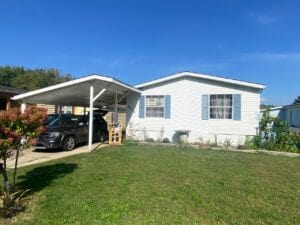
Importance of Carbon Monoxide Alarms in Mobile Homes
Installing CO alarms as a crucial safety measure for mobile homes
One essential aspect that should never be overlooked is the installation of carbon monoxide detectors. These devices are designed to detect the presence of carbon monoxide (CO), an odorless and colorless gas that can be deadly if inhaled in high concentrations.
Mobile homes, with their compact size and limited ventilation, can be particularly susceptible to carbon monoxide buildup. This is why having reliable CO alarms installed throughout your mobile home is crucial. These alarms act as an early warning system, alerting you when dangerous levels of carbon monoxide are detected so that you can take immediate action to protect yourself and your loved ones.
Protecting your family with carbon monoxide detectors in mobile homes
The importance of protecting your family from the dangers of carbon monoxide cannot be overstated. This poisonous gas can leak from various sources such as faulty heating systems, malfunctioning appliances, or even running a generator too close to your mobile home. Without proper detection, it can silently seep into your living space and pose a serious threat.
By installing carbon monoxide detectors in key areas of your mobile home, you create an additional layer of protection for your family. These detectors continuously monitor the air quality and sound an alarm if they detect elevated levels of carbon monoxide. This early warning allows you to promptly evacuate the premises and seek medical attention if necessary.
Why every mobile home needs a reliable CO alarm system
In every mobile home, regardless of its size or age, having a reliable CO alarm system is not just recommended but essential for maintaining a safe living environment. The compact nature of these homes means that any potential source of carbon monoxide release can quickly spread throughout the space, putting everyone at risk.
Investing in a quality CO alarm system provides peace of mind, knowing that you have a reliable defense against this invisible threat. These alarms are designed to meet stringent safety standards and offer features such as long battery life, digital displays for easy monitoring, and even interconnected systems that can notify you in different areas of the home simultaneously.
To order carbon monoxide detectors today and have them shipped directly to your home visit this link.
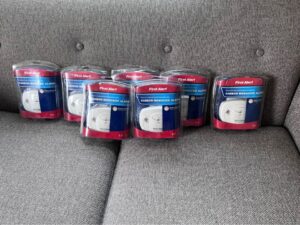
Ensuring peace of mind through proper CO detection in mobile homes
In the context of mobile homes, where space is often limited and ventilation may not be as efficient as in traditional houses, ensuring proper carbon monoxide detection is paramount. The consequences of neglecting this aspect can be dire, with carbon monoxide poisoning leading to symptoms ranging from headaches and nausea to unconsciousness and even death.
By installing carbon monoxide detectors throughout your mobile home, you take a proactive step towards safeguarding the well-being of your family. These devices act as silent guardians, constantly monitoring the air quality and providing an audible warning if dangerous levels of carbon monoxide are detected. With their help, you can rest assured that your loved ones are protected from this silent killer.
Hazards and Potential Dangers of CO Gas
Carbon monoxide (CO) gas is a silent threat that poses numerous hazards and potential dangers. Understanding the health risks associated with CO exposure is crucial in order to protect ourselves and our loved ones from this invisible killer.
Recognizing the silent threat: hazards posed by carbon monoxide gas
One of the most alarming aspects of carbon monoxide gas is its inability to be detected by human senses. It is colorless, odorless, and tasteless, making it impossible to recognize without proper monitoring equipment. This means that even though it may be present in our surroundings, we remain unaware until symptoms start to appear.
Understanding the health risks associated with CO exposure
Exposure to carbon monoxide can have severe health implications. When inhaled, CO molecules bind to hemoglobin in our blood more readily than oxygen does, leading to a decrease in oxygen levels throughout the body. This lack of oxygen can result in various symptoms such as headaches, dizziness, nausea, confusion, and even loss of consciousness.
The invisible killer: potential dangers of carbon monoxide gas
Carbon monoxide poisoning can occur anywhere there are fuel-burning appliances or engines present. This includes homes with furnaces or water heaters, garages with vehicles running inside, or even camping tents with portable stoves. The danger lies in the fact that people often underestimate the risk associated with these everyday scenarios.
Exploring the symptoms and long-term effects of CO poisoning
Symptoms of carbon monoxide poisoning may vary depending on the level and duration of exposure. Mild cases can present flu-like symptoms such as headache and fatigue, while prolonged or higher concentrations can lead to more severe outcomes including brain damage or death.
Long-term effects of CO poisoning can also manifest even after initial recovery from an acute episode. Studies have shown links between chronic low-level exposure to carbon monoxide and cognitive impairments such as memory loss or difficulty concentrating.
Requirements for Installing CO Alarms in Mobile Homes
Ensuring the safety of residents is paramount. One crucial aspect of this is protecting against the silent killer known as carbon monoxide (CO). To meet safety standards and comply with regulations, it is essential to understand the requirements for installing CO alarms in mobile homes.
Meeting Safety Standards: Mobile Home Carbon Monoxide
Installing CO alarms in mobile homes is not just a recommendation; it’s a requirement. These alarms act as early warning systems, detecting dangerous levels of carbon monoxide and alerting occupants before it becomes life-threatening. By adhering to safety standards, mobile homeowners can create a safer environment for themselves and their families.
Complying with Regulations
To ensure proper protection from carbon monoxide, compliance with regulations is necessary. The specific requirements may vary depending on the jurisdiction, but they typically include guidelines for placement and maintenance of CO detectors. It is crucial to familiarize oneself with local laws and regulations to avoid any legal issues while providing a safe living space.
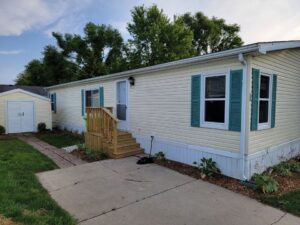
Essential Guidelines for Placement and Maintenance
Proper placement and regular maintenance are vital factors in maximizing the effectiveness of CO alarms. Here are some essential guidelines:
Location: Install at least one alarm on each level of the mobile home, including the basement if applicable.
Proximity: Place an alarm within ten feet of each bedroom door or sleeping area.
Mounting: Mount alarms high on walls or ceilings, following manufacturer instructions.
Testing: Test alarms monthly to ensure they are functioning correctly.
Battery Replacement: Replace batteries annually or as recommended by the manufacturer.
Replacement Schedule: Replace CO alarms every five to seven years, or according to manufacturer guidelines.
By adhering to these guidelines, residents can significantly reduce the risk posed by carbon monoxide exposure.
Understanding Legal Obligations
Mobile homeowners have legal obligations. These obligations are in place to protect residents and ensure their well-being. Failure to comply with these obligations may result in fines or other legal consequences. It is crucial to familiarize oneself with the specific laws and regulations applicable to one’s jurisdiction.
Collaborative Efforts with Consumer Product Safety Commission
In order to enhance safety measures against carbon monoxide (CO) in mobile homes, the industry is actively partnering with the Consumer Product Safety Commission (CPSC). By working together, these two entities aim to prevent CO-related incidents and ensure the well-being of individuals residing in manufactured homes.
Collaborative initiatives between industry experts and CPSC have proven effective in developing better protection against carbon monoxide gas. By coordinating their efforts, they are able to raise awareness about the importance of detecting and preventing carbon monoxide leaks, ultimately minimizing potential risks associated with this deadly gas.
Educating Consumers About the CO Detectors
One significant aspect of this collaboration involves educating consumers about safety precautions. The CPSC works closely with manufacturers to improve product standards and promote the use of CO detectors in mobile homes. These detectors act as an early warning system, alerting residents if dangerous levels of CO are detected. Through joint efforts, both parties emphasize the significance of having functional CO detectors installed in every mobile home.
Collaboration between industry experts and CPSC focuses on addressing potential risks during the production process. Manufacturers work closely with the agency to ensure that mobile homes are built with proper ventilation systems that effectively remove any harmful gases like carbon monoxide or formaldehyde. This emphasis on proper ventilation helps safeguard occupants’ health by reducing exposure to toxic substances.
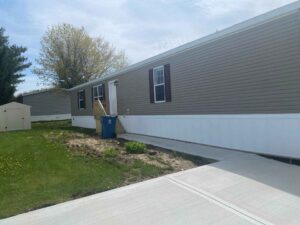
The partnership also extends beyond safety measures within the manufacturing process itself. Industry professionals collaborate with CPSC to develop guidelines for safe installation practices, ensuring that mobile homes are properly vented and comply with necessary regulations. Proper venting allows for efficient removal of combustion byproducts such as carbon monoxide, mitigating health hazards associated with its accumulation.
Mobile Home Carbon Monoxide
Moreover, this collaborative effort aims to protect one of our most vulnerable populations – children. Recognizing that children may be at a higher risk due to their smaller size and developing respiratory systems, industry experts and CPSC work together to implement additional safety measures specifically tailored to safeguard children’s health. This includes considering the placement of CO detectors at appropriate heights and ensuring that mobile homes are free from any potential sources of CO leakage that may pose a risk to children.
By joining forces, the industry and CPSC strive to create a safer environment for those living in mobile homes. Their collaborative efforts encompass various aspects such as product safety, manufacturing standards, ventilation systems, and child protection. Together, they aim to minimize the risk of carbon monoxide exposure and promote the well-being of individuals residing in these manufactured homes.
Addressing Safety Concerns of Older Mobile Homes and Storms
Tackling safety challenges specific to older mobile homes during storms
When severe weather strikes, concerns about the safety of mobile homes often arise. This is especially true for older model manufactured houses that may not have been built to withstand the same level of structural stress as traditional homes. One of the primary challenges faced by these older mobile homes is their vulnerability to strong winds and heavy rainfall.
To safeguard older model manufactured houses from potential carbon monoxide risks during storms, it is crucial to take several precautionary measures. First and foremost, homeowners should ensure that their mobile home’s roof is in good condition. Any leaks or weak spots can lead to water intrusion during heavy rain, which may damage appliances and increase the risk of electrical malfunctions.
Mobile Home Carbon Monoxide
Another critical step in mitigating storm-related hazards in mobile homes is through proper carbon monoxide (CO) detection. It is essential to install CO alarms inside the home, particularly near sources that emit this toxic gas such as a furnace or water heater. These alarms act as an early warning system, alerting residents if CO levels become dangerous.
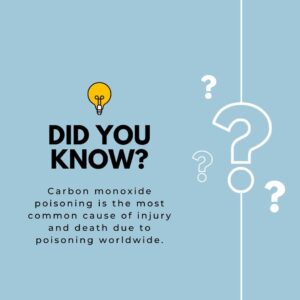
Safeguarding against carbon monoxide risks
In older mobile homes, there may be a higher likelihood of outdated heating systems or appliances that could potentially emit carbon monoxide. To address this concern effectively, homeowners should consider regular maintenance checks on their heating systems and other fuel-burning appliances.
Furthermore, ensuring proper ventilation within the home can significantly reduce the risk of carbon monoxide buildup. Adequate airflow helps dissipate any accumulated gases and prevents them from reaching hazardous levels. Homeowners should also be cautious when using portable generators during power outages caused by storms. Generators should never be operated inside the home or in enclosed spaces due to the potential for deadly CO buildup.
Ensuring resident safety during extreme weather conditions
Older mobile homes are susceptible to various hazards posed by extreme weather conditions, such as heavy snowfall. The weight of accumulated snow on the roof can strain the structure and potentially lead to collapse. To address this concern, homeowners should regularly monitor their roofs during winter storms and promptly remove any excess snow.
In addition to physical safety measures, it is crucial for residents of older mobile homes to have a well-prepared emergency plan in place. This plan should include evacuation routes, designated meeting places, and essential supplies like food, water, and medication. Educating all household members about the plan and practicing drills will ensure everyone is prepared to respond quickly in case of an emergency.
Purchasing Multiple CO Detectors for Mobile Homes
In larger mobile homes, ensuring the safety of your family from carbon monoxide (CO) is paramount. A single CO detector may not provide comprehensive coverage throughout the entire space, which is why it is crucial to consider purchasing multiple CO detectors. By strategically placing these detectors in key areas, you can maximize their effectiveness and protect your loved ones from this silent killer.
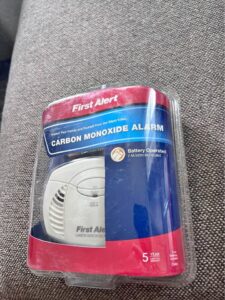
The Importance of Multiple CO Detectors in Larger Mobile Homes
Mobile homes come in various sizes, and as they expand in square footage, the need for additional CO detectors becomes more apparent. A single detector may be sufficient for smaller units, but larger mobile homes require a more comprehensive approach. Carbon monoxide can quickly spread throughout a dwelling, even reaching areas far away from its source. By installing multiple detectors, you create layers of protection that ensure any potential leaks are detected promptly.
Ensuring comprehensive coverage with multiple carbon monoxide alarms
Having adequate coverage is essential. To achieve this, it is recommended to install a CO detector on every level of your mobile home. Place one near each sleeping area and ensure there is at least one detector within close proximity to any fuel-burning appliances or heating systems. By doing so, you minimize the risk of missing any potential leaks and provide comprehensive coverage across your entire living space.
Proper placement and quantity of CO detectors for maximum effectiveness
To maximize the effectiveness of your CO detectors in a mobile home setting, proper placement and quantity are key factors to consider. Here are some guidelines to follow:
Install at least one detector on every level: This ensures that no matter where you are in your mobile home, you will be alerted if there is a rise in carbon monoxide levels.
Place near bedrooms: Since people spend a significant amount of time sleeping, having a detector near each sleeping area is crucial. This allows for immediate detection and alerts during the most vulnerable hours.
Near fuel-burning appliances: Install detectors near any fuel-burning appliances, such as furnaces, water heaters, or stoves. These are common sources of carbon monoxide leaks and require close monitoring.
By adhering to these placement guidelines and considering the square footage of your mobile home, you can determine the appropriate quantity of CO detectors needed for maximum effectiveness.
Investing in your family’s safety: why it’s crucial to have multiple CO detectors
Investing in multiple CO detectors is a small price to pay for peace of mind. Carbon monoxide is odorless and invisible, making it impossible to detect without specialized equipment. By having multiple detectors strategically placed throughout your mobile home, you significantly reduce the risk of exposure to this deadly gas.
Remember that carbon monoxide poisoning can lead to severe health issues or even fatalities if left undetected. Don’t compromise on safety. Invest in multiple CO detectors today and create a safe living environment within your mobile home.
You might be interested in our article: Mobile Home Supplies: Fast Delivery, Wide Selection
Mobile Home Carbon Monoxide: Conclusion: Taking Action
In conclusion, protecting yourself and your loved ones from the dangers of carbon monoxide (CO) gas in mobile homes is crucial. By understanding the importance of carbon monoxide alarms, recognizing the hazards associated with CO gas, and following the requirements for installing CO detectors in mobile homes, you can significantly reduce the risk of CO poisoning.
Collaborative efforts with organizations like the Consumer Product Safety Commission (CPSC) play a vital role in ensuring that safety standards are met and regulations are enforced. By staying informed about their guidelines and recommendations, you can stay ahead of potential safety concerns.
It’s important to address the unique challenges posed by older mobile homes and storms. Regular maintenance, inspections, and taking necessary precautions during severe weather conditions can help minimize risks associated with CO leakage.
Consider purchasing multiple CO detectors for your mobile home to ensure comprehensive coverage. Place them strategically near sleeping areas, living spaces, and any fuel-burning appliances to provide early detection and timely warnings.
Final Thoughts on Carbon Monoxide
Remember that taking action against mobile home carbon monoxide requires ongoing vigilance. Regularly check your alarms to ensure they are functioning correctly and replace batteries as needed. Stay updated on new technologies or advancements in CO detection systems to enhance your safety measures.
By implementing these proactive steps, you can create a safer environment for yourself and those around you within your mobile home community. Prioritizing the well-being of your family by investing in proper carbon monoxide protection is essential.
Take control today – safeguard your loved ones from this silent killer!
Mobile Home Carbon Monoxide: FAQ’s
How often should I test my carbon monoxide alarms?
It is recommended to test your carbon monoxide alarms at least once a month to ensure they are working correctly.
Do I need different types of carbon monoxide detectors for different areas within my mobile home?
While it is advisable to have multiple detectors placed strategically throughout your mobile home, you can use the same type of carbon monoxide detectors throughout.
Can I install carbon monoxide alarms myself, or should I hire a professional?
Installing carbon monoxide alarms is typically a straightforward process and can be done by following the manufacturer’s instructions. However, if you are unsure or uncomfortable with installation, it is always best to consult a professional.
Are there any specific maintenance tasks I need to perform on my fuel-burning appliances to prevent CO leaks?
Regular maintenance of your fuel-burning appliances is crucial. Ensure that they are serviced annually by qualified professionals who can inspect and clean them thoroughly.
How long do carbon monoxide alarms last? Do they require replacement?
Carbon monoxide alarms have an average lifespan of 5-7 years. It is important to replace them according to the manufacturer’s guidelines or when they reach their expiration date.
What should I do if my carbon monoxide alarm goes off?
If your carbon monoxide alarm sounds, immediately evacuate everyone from the mobile home and call emergency services. Do not re-enter until authorities have determined it is safe to do so.
Can severe storms impact the functionality of carbon monoxide detectors in mobile homes?
Yes, severe storms can potentially affect the functionality of carbon monoxide detectors due to power outages or damage caused by extreme weather conditions. It is essential to check your detectors after such events and replace them if necessary.
Are there any additional safety measures I can take to minimize the risk of CO poisoning in older mobile homes?
In addition to installing carbon monoxide detectors, ensure proper ventilation in your older mobile home. Regularly inspect flues, chimneys, and vents for blockages or damages that may hinder airflow and contribute to CO buildup.
Can pets be affected by carbon monoxide gas in mobile homes?
Yes, pets are also vulnerable to the dangers of carbon monoxide gas. It is important to safeguard their well-being by implementing proper CO detection systems and taking necessary precautions within your mobile home.
Note: The answers provided above are for informational purposes only and should not replace professional advice or guidance. Consult with experts or authorities in case of specific concerns or emergencies.
You might also be interested in our articles:
Mobile Home Dehumidifiers: Moisture & Air Quality
